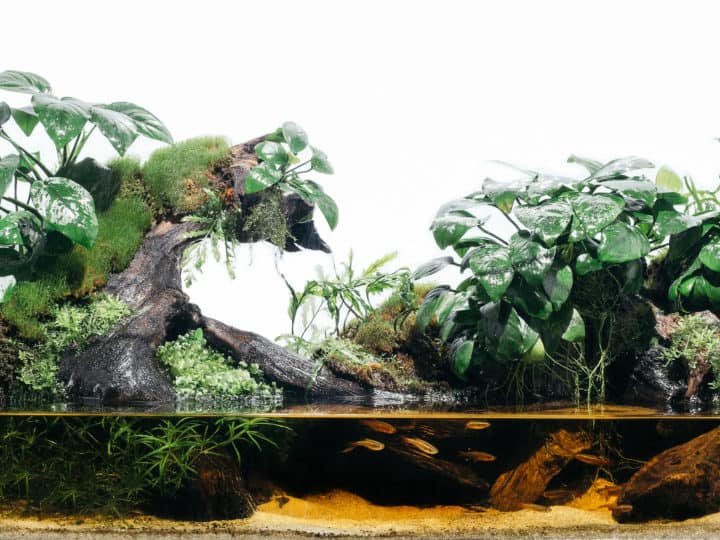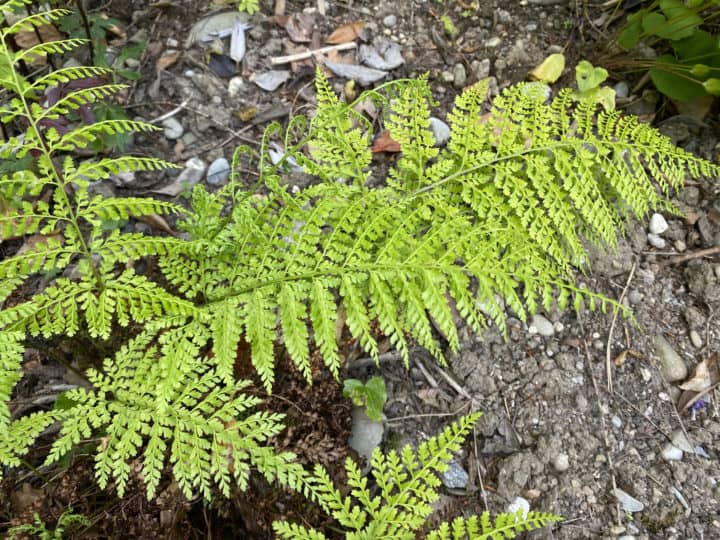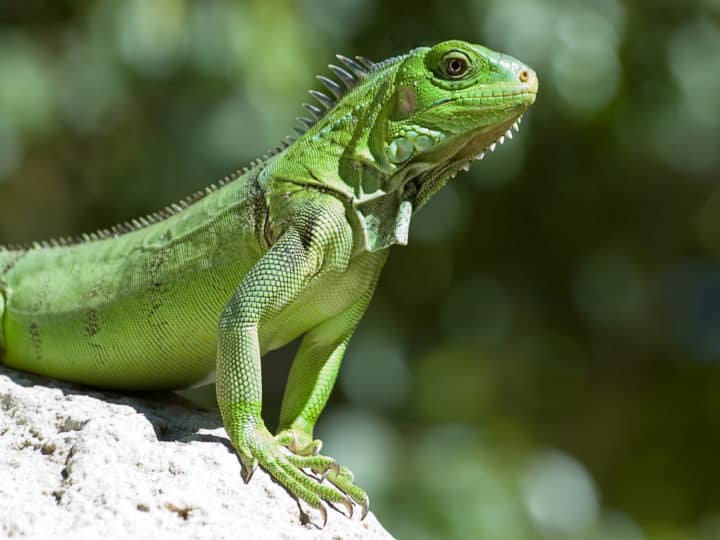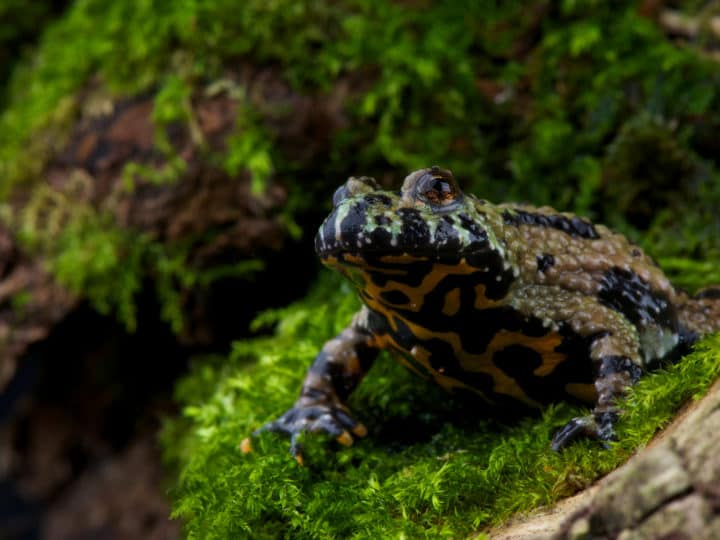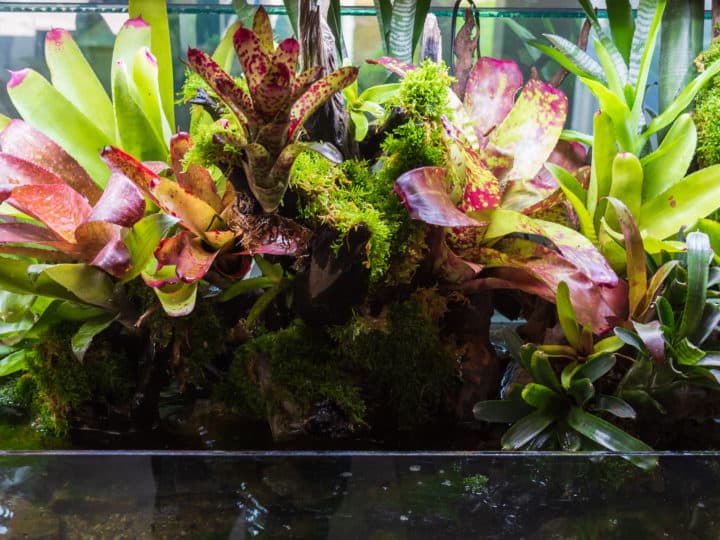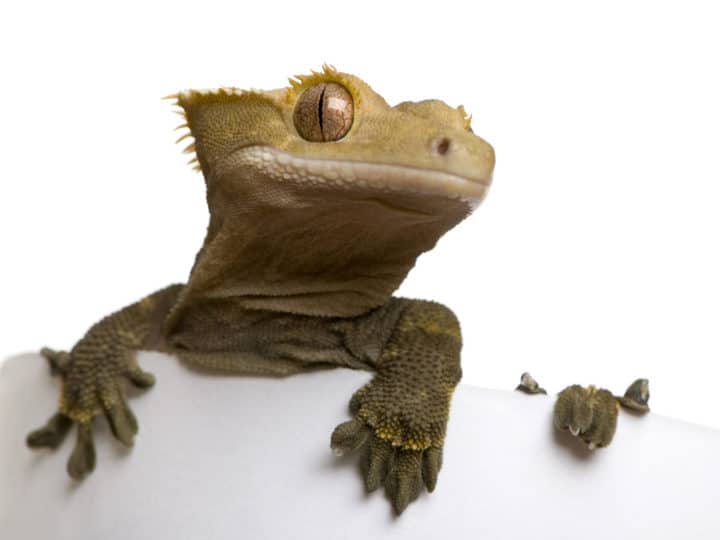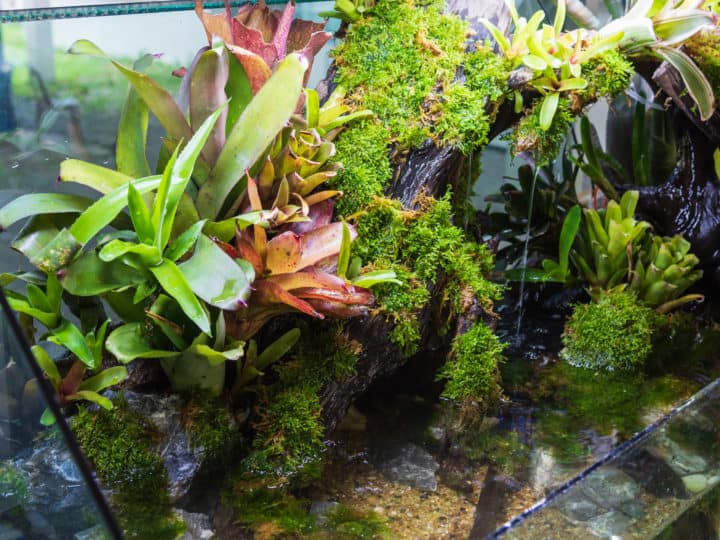Water-loving anoles make fantastic pets. Their lively, day-playing antics are entertaining to watch, and they are relatively easy to take care of. Most anoles also prefer humid and wet environments, making them one of the few ideal paludarium reptiles.
Quick Answer
Anoles can live in a paludarium as long as the conditions are ideal. These reptiles can swim, and they won’t attack aquatic animals, so they are safe to keep in your tank. However, they don’t get along well with many other reptiles and need plenty of space to thrive.
So, let’s talk about how you can add some anoles to your paludarium setup. I’ll tell you about the ideal types of anoles to keep in your paludarium, give you some ideas for tankmates, and teach you how to set up your paludarium to make it a cozy home for your anoles.
The Best Types of Anoles for a Paludarium
Almost all anoles can thrive in a paludarium, but some are more suited to tank life than others.
The best types of anoles for a paludarium are green anoles and brown anoles because they prefer humid, wet, warm climates and are small enough to live in a tank comfortably. They are also natural swimmers, so they won’t drown in a paludarium.
Green Anoles
Green anoles, or Anolis carolinensis, are the most popular anoles to keep as pets. Hailing from the Southeastern United States, these anoles change from green to brown depending on their habitat, and they generally prefer to bask on vegetation, rarely settling on the ground.
They are diurnal, which means they stay awake during the day, making them an excellent pet to watch and interact with.
Green anoles need plenty of humidity (usually between 60 and 70%), making paludarium life ideal for these reptiles.
These anoles usually reach about 5 to 8 inches (15.2 to 20.3 cm) in length when kept in captivity, and each pair of anoles usually needs at least a 10-gallon aquarium. For every extra anole, you will need another 5 gallons. So, if you have three green anoles, you will need a 15-gallon tank at the bare minimum.
If you plan on keeping multiple green anoles, you should ensure that you have only one male since these reptiles can be territorial and pick fights with other males. However, you can incorporate as many females into your paludarium as your tank allows without risking skirmishes or aggression.
Anoles usually aren’t interested in eating fish or other aquatic animals since they are insectivores and rarely dive underwater. However, they may attack tiny surface-dwelling fish or young fish, so it is best to avoid hatching young fish or incorporating smaller varieties of fish into your paludarium.
Brown Anole
The brown anole, or Anolis sagrei, is native to the Caribbean and Southeastern United States and is another excellent species for paludarium living. The brown anole is very similar to the green anole in size and climate preferences, but it generally prefers to dwell lower in a tank than its green counterparts.
These highly evolved diurnal reptiles have versatile habitats in the wild, and they generally shift from canopies to low, ground-covering vegetation. So, in a tank, they prefer both climbing space and plenty of substrate with vegetation for them to hide in.
Brown anoles are slightly more aggressive than green anoles, so be sure not to house more than one male in your paludarium to avoid fights, which can sometimes be fatal. Ideally, you shouldn’t house male green anoles in the same tank as male brown anoles because the brown anoles will inevitably respond with aggression.
These anoles also need high humidity, and they generally thrive best when the humidity level is above 70%, so keeping everything damp in your tank is crucial for these reptiles.
Like green anoles, brown anoles generally won’t attack full-grown fish in the water, though you will have to avoid putting very small or young surface-dwelling fish into your paludarium.
Ideal Tankmates for Anoles
Anoles don’t get along with everyone, and not all reptiles and fish are suited for paludarium life. So, you’ll have to be selective about the other species you bring into your tank.
Some of the ideal tankmates for anoles in paludariums are house geckos, frogs, long-tailed lizards, other anoles, isopods, fiddler crabs, cory catfish, mollies, danios, shrimp, guppies, and freshwater snails.
So, let’s go in-depth and look at other species that anoles generally play well with.
Terrarium Tankmates
Here are some ideal tankmates for anoles that live on land:
- House geckos
- Frogs
- Long-tailed lizards
- Other anole species (when there is only one male in the tank)
- Isopods
- Millipedes
However, keep in mind that you should always introduce other species with caution since anoles can be territorial. Some anoles may react unpredictably to other reptiles and amphibians, so always supervise your anole when you add someone new to the paludarium.
In addition, never add another aggressive or dominant land-dwelling creature, such as a snake, turtle, or spider, to your anole paludarium. Anoles will likely pick a fight with these animals, and someone will probably get hurt.
Aquatic Tankmates
A paludarium isn’t complete without the aquarium section!
Some ideal aquatic tankmates for anoles in a paludarium include:
- Cory catfish
- Fiddler crabs
- Guppies
- Mollies
- Danios
- Shrimp
- Freshwater snails (though some of them might get eaten)
How To Set Up a Paludarium for an Anole
When you set up your paludarium, you need to optimize it for your anoles and their tankmates.
To set up a paludarium for an anole, ensure that the water is relatively shallow with ramps, that there are plenty of hiding spots, that there is dense vegetation and wood for your anoles to climb on, and that there is enough heat and humidity in your tank.
Although anoles can swim, they could drown if they get stuck in the water. So, to stay on the safe side, keep the water level to about ⅓ of your tank. You should also include “ramps,” such as half-submerged branches, stones, and plants, which will allow your anole to climb in and out of the water quickly.
Anoles also prefer to hide when they sleep, so be sure to incorporate plenty of tucked-away spots for them to hole up in. They also prefer plenty of climbing space and like to bask under a heat lamp while perched upon dense vegetation and branches, so make sure your paludarium is layers tall, with plenty of fake and live plants.
Since anoles are also cold-blooded, you will need to give them the proper amount of heat. Anoles thrive in daytime temps between 75º and 78º F (24º and 26°C), and at night they need the temperature to be around 69º F (21º C). So, always ensure that you keep heating elements to the correct temperatures for your anoles.
Humidity should also be high, and if your plants and aquarium don’t boost the moisture enough, you may need to mist your tank about twice a day.
Can Anoles Swim?
For a long time, biologists and anole experts believed that anoles preferred to live exclusively in leafy canopies, but not too long ago, Janson Jones discovered that some anoles thrive in the swampy waters of Georgia.
Anoles can swim, and they float naturally. They navigate swampy vegetation and shallow waters with ease in their natural habitats, tucking their legs in and coasting along the water’s surface like a snake.
This means that when keeping anoles in a paludarium, you can expect them to take a dip every once in a while. Even if they don’t, they shouldn’t drown in your aquarium water.
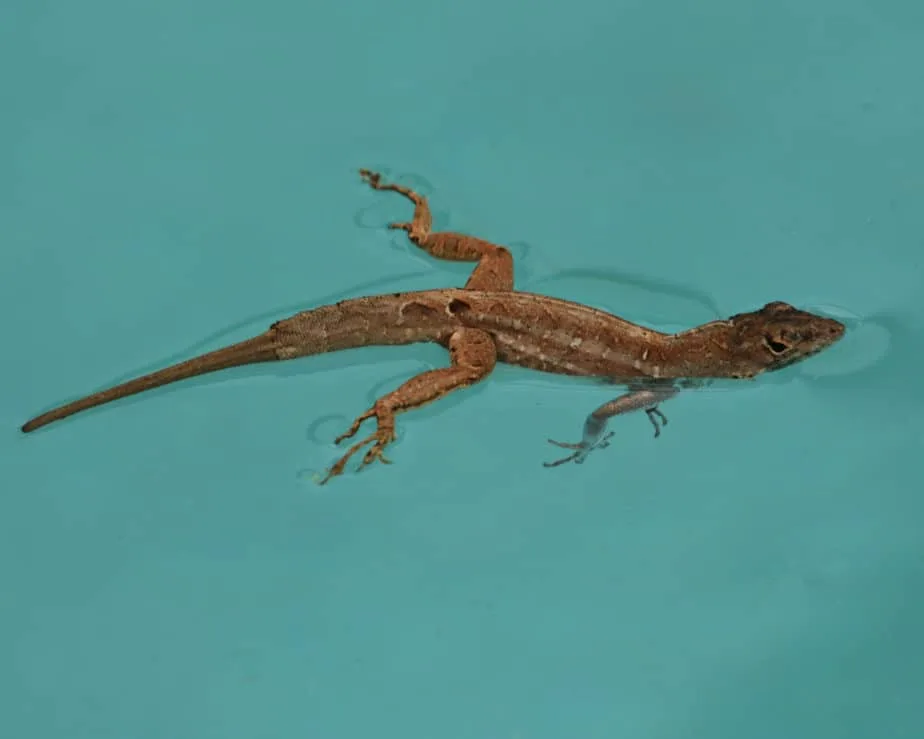
Conclusion
Anoles, especially green and brown anoles, are the perfect reptilian addition to your paludarium. These reptiles love water, are small enough to live in a tank with limited space, and won’t prey on many paludarium-living fish. They prefer warm tanks with shallow water, space to climb on foliage and branches, and a hot, humid environment, all of which are incredibly achievable with a paludarium setup.

